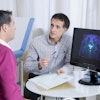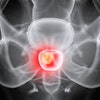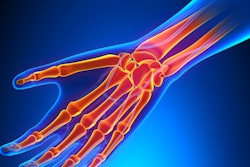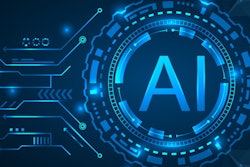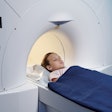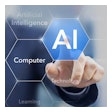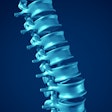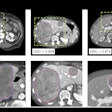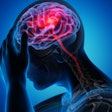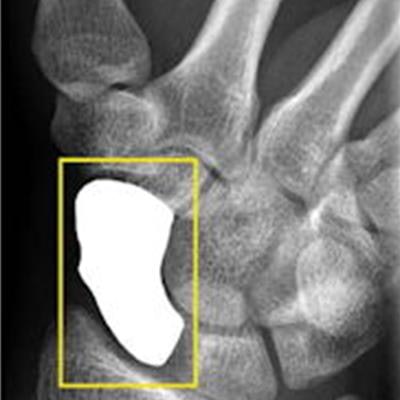
An artificial intelligence (AI) algorithm was able to accurately detect scaphoid fractures on radiographs, potentially speeding up diagnosis of these troublesome injuries, according to research published online 28 April in Radiology: Artificial Intelligence.
A team of researchers led by Nils Hendrix of the Jeroen Bosch Hospital and Jheronimus Academy of Data Science in the Netherlands developed a deep learning-based fracture detection system that comprises two convolutional neural networks (CNNs): one for segmentation of the scaphoid and the other for detecting fractures. In testing, their system performed comparably to 11 radiologists.
"The system may be able to assist residents, radiologists or other physicians by acting either as a first or second reader, or as a triage tool that helps prioritize worklists, potentially reducing the risk of missing a fracture," said Hendrix in a statement from the RSNA.
Comprising approximately 7% of all skeletal fractures, scaphoid fractures typically occur when hands are used to try to break a fall. Prompt diagnosis is important; these fractures may not heal properly if untreated, resulting in problems such as arthritis and even loss of function, according to the researchers.
Although conventional x-ray is the imaging modality of choice for diagnosing scaphoid fractures, it's often limited by the overlap of the scaphoid with the surrounding wrist bones. Visibility of fractures can also be obscured by variations in wrist positioning and x-ray technique, according to the researchers.
As a result, the group sought to develop a deep learning-based system to help radiologists detect these fractures. They used a dataset of 1,039 radiographs from 775 patients to train and test a segmentation CNN and then another dataset of 3,000 radiographs from 1,846 patients for training a fracture detection CNN.
 Overview of the scaphoid fracture detection pipeline, which consisted of a segmentation and detection convolutional neural network (CNN). A class activation map is calculated and visualized as a heatmap for fracture localization. Image courtesy of the RSNA.
Overview of the scaphoid fracture detection pipeline, which consisted of a segmentation and detection convolutional neural network (CNN). A class activation map is calculated and visualized as a heatmap for fracture localization. Image courtesy of the RSNA.During testing, the segmentation CNN produced a dice similarity coefficient of 97.4% ± 1.4 with a Hausdorff distance of 1.31 mm ± 1.03.
The researchers also performed an observer study that involved 11 radiologists, including three radiology residents and eight attending radiologists. The algorithm yielded 78% sensitivity, 84% specificity, and 83% positive predictive value on a separate dataset of 190 radiographs. It also delivered comparable performance to the 11 radiologists.
| AI algorithm performance for detecting scaphoid fractures | ||
| Mean of 11 radiologists | AI algorithm | |
| Area under the curve | 0.83* | 0.87* |
The AI system offers the potential to avoid additional imaging exams and unnecessary therapy, as well as speed up diagnosis and enable earlier therapy, according to the researchers. Avoiding treatment delays could reduce complications that lead to subpar clinical outcomes.
"The convolutional neural network may also reduce unnecessary wrist immobilization, performed out of precaution, in more than half of the patients with clinical suspicion for having a scaphoid fracture," Hendrix said.
The algorithm's class activation maps also overlapped with fracture lines in the scaphoid, and it could potentially be used to delineate potential fractures, according to the authors.
In the next phase of their work, Hendrix et al plan to expand the system to incorporate multiple x-ray views. In addition, an experimental study is currently underway to assess the performance of radiologists for identifying scaphoid fractures on x-rays with and without the aid of the AI software. The researchers also hope to extend the algorithm to support fracture detection in other bone structures.
